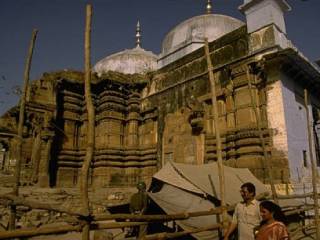
On Friday, May 20, 2022, Advocate Rastogi argued in the Allahabad High Court that there is a self-manifested Jyotirlinga of Adi Vishweshwara at the site of the disputed Gyanvapi structure.
In the Allahabad High Court, Vijay Shankar Rastogi, the counsel for Lord’s next friend, told Live Law that the Shivling found in the wuzukhana is not the Shivling of Adi Vishweshwar, it is Tarakeshwar Mahadev. He said that the Shivling of Adi Vishweshwara may be just below the central dome of the Gyanvapi structure. This self-manifested Shivaling is located 100 feet below the earth’s surface.
It should be noted that self-manifested means that which has appeared itself, i.e. which has not been created. In this sense, Lord Adi Vishweshwara is believed to have manifested himself as the Shivling, which represents the form of Lord Shiva. According to the Puranas, the Shivling at Kashi is one of the 12 Jyotirlingas and is the oldest. The Jyotirlingas have a long history and their description is inscribed in many Hindu scriptures including the Vedas, Upanishads, and Puranas.
Advocate Rastogi said, “During the British rule, an old map of the Vishwanath temple was made by the then District Magistrate of Varanasi, James Prinsep. That map is mentioned in ‘History of Banaras written by Dr. AS Altekar (Head of Department, BHU Varanasi)’. It shows which places were the temples of which deity.
Vijay Shankar Rastogi, appearing for Adi Vishweshwar in the Kashi Vishwanath and Gyanvapi Mosque case, which has been going on in the civil court of Varanasi since 1991, said that on the basis of that map, the location of the wuzukhana points to the Tarakeshwar temple. He said that this temple was demolished and flattened. Rastogi said that if it is a Shivling, it can be of the same Tarakeshwar Mahadev.
The Vishweshwara temple was demolished several times by invaders
According to Dr Vishwanath Pandey, a former officer on special duty at Kashi Hindu University, the proof of the construction of the Kashi Vishwanath temple five times is found in history. The first was built by Maharaja Vikramaditya near the Varuna-Ganga Sangam 2050 years ago. Fahian, the first Chinese traveller who came to Kashi in 402 AD to learn Sanskrit, has written about seeing the Shivling of emerald of Adi Vishweshwara consecrated by Maharaja Vikramaditya.
For the second time, the Vishweshwar temple was built near the pond of Ganj, but the historians did not get any specific information about this place. Dr Vishwanath Pandey said that during the archaeological excavation at Rajghat in Varanasi, a 2,500 years old Avimukteshwar seal was found, which was associated with the worship of Lord Shiva.
According to the book ‘Kashi Ka Itihas’ written by Raja Motichand of Kashi, the Adi Kashi Vishweshwar was broken for the first time by Qutubuddin in 1194 AD. After that, the temple was rebuilt, but in 1447 AD, the then Sultan of Jaunpur, Mahmud Shah Sharki, demolished it again.
After this, in 1585, during the reign of Akbar, Raja Man Singh built the Kashi Vishweshwar temple through finance minister Todarmal. Narayan Bhatt had helped in this construction. It was demolished and in 1669 AD Aurangzeb built the disputed Gyanvapi structure.
During the reign of Aurangzeb, Raja Jai Singh II built the Adi Vishweshwara temple in 1680 AD. After that, in 1780 AD, Maharani Ahilyabai Holkar got the Kashi Vishwanath temple ready. It is said that in this temple, the original argha (on which the Shivling is installed) of Lord Adi Vishweshwar temple is kept to protect it from the Muslim invaders.
Source : OpIndia




